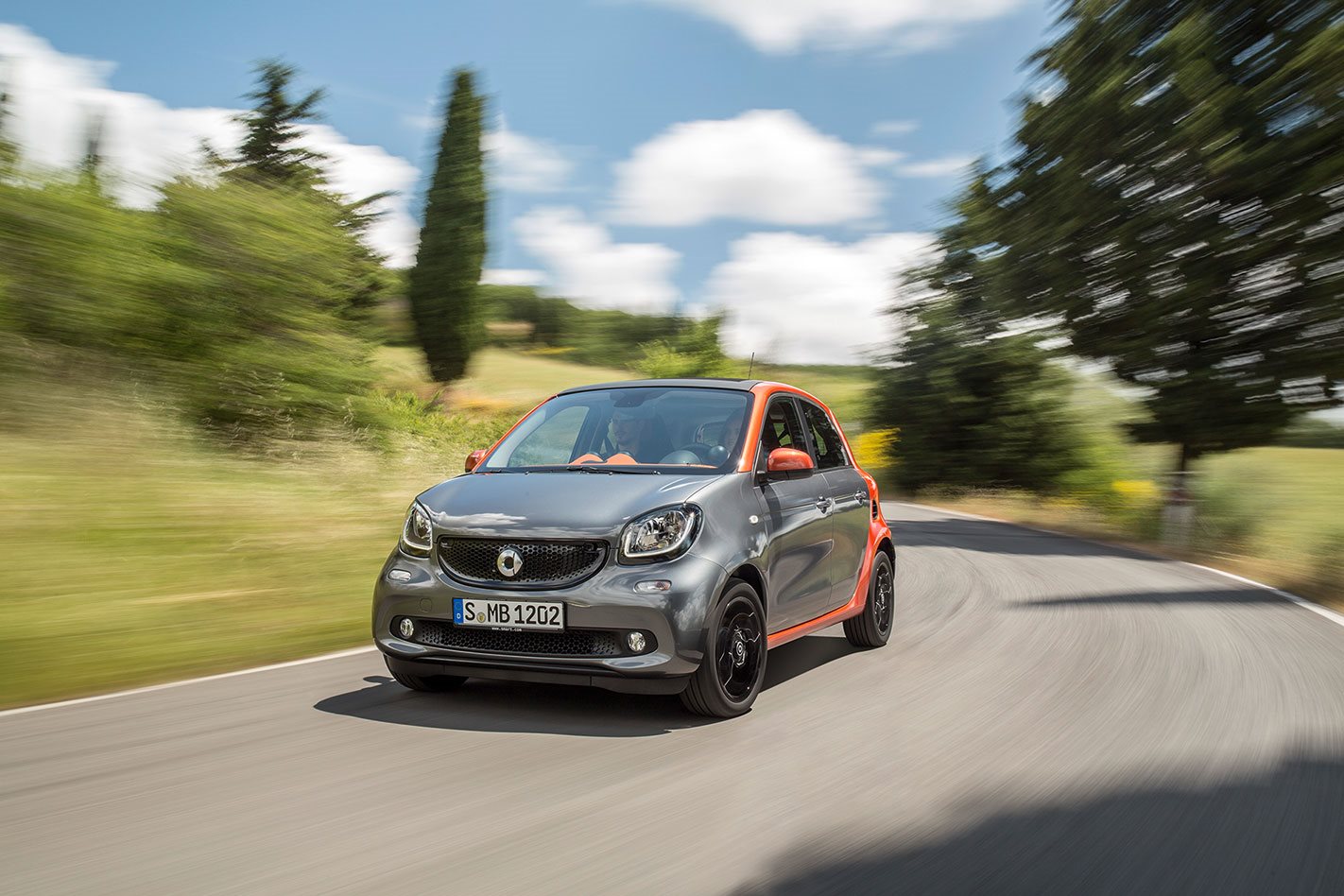With four seats, the ForFour has double the passenger capacity of the stubby Smart ForTwo. But unlike Smart’s first attempt at a larger car a decade ago, this one sticks with the brand’s trademark rear-engine and rear-drive layout.
WHAT IS IT? Product of a city-car collaboration between Daimler, owner of the Smart brand, and the Renault-Nissan Alliance, the Smart ForFour is the same car under the skin as the quite differently styled new Renault Twingo.
WHY WE’RE TESTING IT Smart’s future here is unclear. Mercedes-Benz Australia must soon decide whether to withdraw the brand from the market or commit to importing the new-generation Smarts. Driving the ForFour (and ForTwo) at the recent European launch was a chance to answer this question: Should they stay or should they go?
MAIN RIVALS Forget comparisons with cut-price micro-horrors like the Holden Barina Spark and Suzuki Alto. Instead, think Fiat 500 design stylishness plus the thorough German engineering of the discontinued Volkswagen Up. But with the engine in the back, not the front.
THE WHEELS VERDICT Premium-priced city specialist that’s quite good at what it’s been designed to do. But the ForFour would be more fun to drive if it felt, well, more rear-engined.
PLUS: Ride; interior class and cleverness; overall refinement; turning circle; new double-clutch auto MINUS: Slow and feel-free steering; handling; fat A-pillars; expensive
THE WHEELS REVIEW SMART’S new ForFour isn’t the first. The Daimler-owned city-car specialist did it once before, in 2004.
That car was essentially a front-drive Mitsubishi Colt wearing a thin veneer of Smart-ness. Built in a factory in Holland jointly owned (at the time) by Mitsubishi and Volvo, it shared nothing in common with the contemporary ForTwo. It failed to sell and was dropped after only two years.
This time round, Smart has done something smarter. The second ForFour shares drivetrains, major interior components like the instrument panel, and much of its body and chassis structure with the third-generation ForTwo.
Thanks to a co-operation deal inked between Daimler and the Renault-Nissan Alliance, the new ForFour is also a technical twin of the equally new Twingo. Both are manufactured at a Renault factory in Novo Mesto, Slovenia. (There’s no Renault relative of the two-seat ForTwo, which continues to be made in Smart’s own plant in Hambach, France.)
Although the rear-engine and rear-drive layout has been out of small-car fashion for decades, it’s been a trademark of Smart’s stubby two-seaters since 1998. And it makes good sense for the revived ForFour.
With the engine tucked between the rear wheels, the front wheels are free to swing through a greater steering arc. The new ForFour is just under 3.5 metres long (70cm longer than the ForTwo) and has a turning circle of only 8.7 metres.
This isn’t the Smart’s only trick. The ForFour may be tiny, but its rear doors swing open to almost 90 degrees for easy access. While the pair of rear seats isn’t sprawlingly roomy, there is a lot of useful space inside.
Smart’s new 52kW 999cc naturally aspirated and 66kW 898cc turbo three-cylinder engines are related to the Renault triple in the Clio IV. The French company redesigned their engine, tilting it 49 degrees from vertical to fit beneath the rear cargo compartment floor.
Smart, working with transmission specialist Getrag, handled development of the new six-speed double-clutch transmission, which weighs only 68kg. There’s also a five-speed manual.
The larger but less powerful atmo 1.0-litre seems a sweeter engine than the 0.9-litre turbo, with more precise throttle response. But the extra thrust of the elastic little 0.9-litre turbo was welcome among rushing Spaniards in Barcelona.
On roads outside the city the ForFour was easily able to cruise quietly at 120km/h. Ride comfort is remarkable for something so small, too, but the handling fails to deliver any of the snappy agility expected from a rear-engined car and the electrically assisted steering is slow, light and lifeless.
Smart’s engineers have set up the suspension – front struts, de Dion axle at the rear – for safe and sound understeer, but the steering fails to inform of the onset of front-end slip. It could have been so much better…
Where the car succeeds most emphatically is design. The interior is a colourful environment that’s visually entertaining and remarkably useful, while the two-tone exterior offers ample scope for self-expression.
It’s a very different city-car formula than the cheap and cheerless fare Australians are used to. In the new Smart four-seater you can see, hear and feel reasons to pay more for something so small, even at the potential $22,000 starting price in Australia for the 1.0-litre engine with five-speed manual combo.
Unlike the first ForFour, this one deserves to survive.
SPECS Model: Smart ForFour Engine: 898cc 3-cyl, dohc, 12v, turbo Max power: 66kW at 5500rpm Max torque: 135Nm at 2500rpm Transmission: 5-speed manual Weight: 995kg 0-100km/h: 11.2sec (claimed) Fuel economy: 4.3L/100km Price: $24,000 (estimated) On sale: TBA






